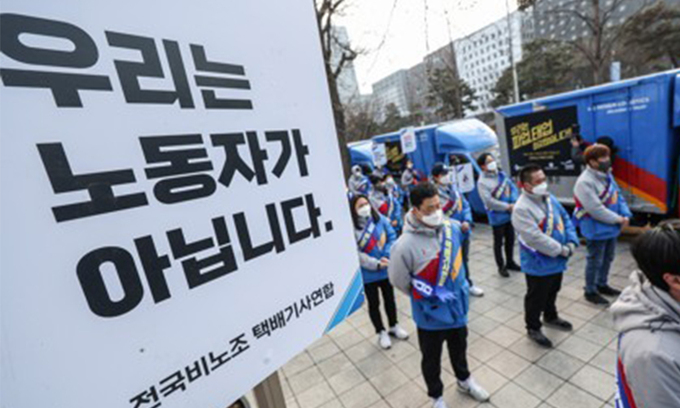Rate our content:
There was an error making your request, please try again!
Your evaluation is essential for us keep improving the Pebmed Portal
The PEBMED Portal is intended for doctors and other health professionals. Our contents inform recent panoramas of medicine.
If you are interested in publishing your curriculum on the internet, connecting with patients and increasing your differentials, create a free profile on AgendarConsulta, the partner site of PEBMED.
If you are interested in more contents and courses focused on medical residency, get to know Medcel, the partner site of PEBMED
For many years, nephrologists have been regular users of intensive care units.
The evolution of intensive care allowed increasingly severe patients to have better prognoses and this process caused a significant increase in the complexity of patients in the ICU, which generated a change in the scenario of acute kidney injury and in the management of patients from a nephrological point of view.
This brought us to the current scenario in which the injury re In most cases, acute kidney injury is part of a context of multiorgan dysfunction rather than isolated acute kidney injury.
In this historical trajectory of increasing severity of patients, intensive nephrology emerged as a subspecialty and much has been learned about the conduct and management of these patients.
Identifying and classifying patients
For many years there have been several different classifications of acute kidney injury in the literature, which made it very difficult to compare studies and to carry out studies with a large number of patients so that robust responses could be obtained.
1
After much debate, the current classification of kidney damage was reached AKIN acute (Table 1), which classifies the patient into three acute kidney injury severity groups and is based on creatinine and diuresis.2
The current classification has facilitated the performance of large multicenter studies.
Table 1: Classification of AKIN Acute Kidney Injury
The large studies on dialysis
For a long time, uncertainty permeated the practice of intensive nephrology, as fundamental questions did not have an adequate answer. Studies with sufficient size and statistical power were lacking.
Furthermore, the complexity and heterogeneity of critically ill patients obviously make it difficult to standardize the studies and characteristics of each group of patients can influence the results.
The peculiarities of the critically ill patient also make it difficult to establish objective criteria for the beginning of the renal therapy replacement therapy.
Historically, answers to three important questions were sought : How to dialyze? What is the proper dose of dialysis? When to dialyze?
The first two were answered in the last two decades.
How to dialyze? The method of renal replacement therapy can be intermittent or continuous. Patients with greater hemodynamic instability may benefit from continuous methods, but overall there is no difference in mortality due to the type of renal replacement therapy.3
What is the dialysis dose? Today, it is known that a minimum dose of dialysis should be prescribed and from this limit onwards, no benefits were observed with increasing the dose. This dose is 20 – 25 ml/kg/h for continuous methods and a weekly Kt/V of 3.9 for intermittent methods. Above these doses there was no reduction in mortality.3,4
And the answer to the last of the questions: “When to dialyze patients with acute kidney injury?”
The timing of starting dialysis therapy has always been the subject of heated debates, as there were no objective data in the literature indicating the best time to start dialysis.
The classic indications for urgent hemodialysis: refractory hypervolemia, refractory acidosis, refractory hyperkalemia, uremia and uremic pericarditis were for a long time the standard indications for starting dialysis therapy, and even so, it still raised some doubts. What is refractory acidosis? Refractory as for bicarbonate replacement? How is uremia defined in a patient who is intubated and sedated?
Clinical observation and literature data began to emerge pointing to the possibility that in some cases the start of dialysis before for the patient to go into dialysis emergency could be interesting.
It is known that positive fluid balance is associated with worse clinical outcomes and even increased mortality. Could starting dialysis earlier reduce this fluid accumulation and improve the prognosis of these patients?
In addition, patients who start dialysis earlier will theoretically remain in better homeostasis, with better control of electrolytes and acid-base balance. Would dialysis then be beneficial in this scenario?
In this context, the term “early dialysis” emerged, which was never well defined, but referred, in general, to the beginning of dialysis before the emergence of some dialysis urgency.
However, there are obvious problems in relation to starting dialysis. There is a need for a deep venous access, which creates a risk of puncture accidents and increased infection associated with the catheter.
Hypotension during dialysis is a known phenomenon that can bring deleterious consequences for the patient such as tissue hypoperfusion, splanchnic ischemia, myocardial dizziness and increased doses of amines
There is also a risk of electrolyte alterations such as hypokalemia and hypophosphatemia.
To shed light on this topic, in recent years the AKIKI, ELAIN and more recently the STARRT AKI studies were carried out to try to answer these questions and define the best time to start dialysis treatment in patients with acute kidney injury.
AKIKI and ELAIN
These two studies moved nephrology in 2016, as they had divergent results and were published simultaneously in major journals (NEJM and Journal of the American Medical Association), which generated a lot of discussion at the time.
The AKIKI study5
(Figure 2) had 60-day mortality as the primary outcome. It was a multicenter study carried out in France and divided patients into two groups with a total of 620 patients (311 early dialysis patients vs. 308 later dialysis patients). The AKIKI showed no difference for the primary endpoint (60-day mortality) but in relation to the secondary endpoints it pointed to some advantage in the late group: fewer days on dialysis, lower bloodstream infection rate, and earlier recovery of renal function.
The ELAIN Study6 (Figure 3) was performed in a single hospital in Germany and had 90-day mortality as the primary outcome. 231 patients were randomized into two groups (112 earlier dialysis patients X 119 later dialysis patients).
The result in relation to the primary outcome was reduced mortality in the early group (39 .3% x 53.6%) and some secondary outcomes were also favorable to the early-onset group, such as: faster recovery of renal function, shorter dialysis duration and length of hospital stay.
How can such marked differences in results be explained?
The AKIKI study had more clinical patients while the ELAIN had basically surgical patients.
The inclusion criteria were also different in the two studies and the ELAIN study had criteria for starting dialysis much earlier than in the AKIKI.
As the inclusion and exclusion criteria were different, as well as the definition of early and late strategies, it is not possible to make a comparison of studies.
Something innovative and noteworthy in the ELAIN study was the use of NGAL (a biomarker used for diagnosis of kidney injury) as a criterion for inclusion in the study .
At that time there were two recently published studies and more questions than answers.
As the question remained unclear, it was asked further studies required.
STARRT-AKI
In order to try to answer this question once and for all, the STARRT-AKI was created7 (Figure 4), a multicenter study, with the participation of 15 countries and with a large number of patients. The result was published in July 2020 in the NEJM.
In this study, 2,927 patients were randomized into two groups (1,465 accelerated strategy vs. 1462 standard strategy)
The primary outcome was 90-day mortality. The study did not demonstrate superiority in the early dialysis group (mortality was equal in both groups) and some secondary outcomes were more favorable in the standard strategy group: higher rate of renal function recovery in 90 days and lower incidence of adverse effects.
Furthermore, 38.2% of patients in the standard strategy group did not require dialysis.
Therefore, the largest study ever conducted to investigate this issue did not show the benefit of early dialysis.
Transporting this information to practiceHow was the daily practice of the nephrologist influenced by these studies?
The most appropriate concept today is that of individualization of treatment.
In general, we have no doubts that patients with acute kidney injury and who have dialysis urgency need renal replacement therapy. These indications would be: hyperkalemia; metabolic acidosis with a pH less than 7.2 (especially with bicarbonate
However, even if a specific patient does not have one of these conditions, depending on the clinical situation, it may benefit from renal replacement therapy, and therefore the importance of individualization.
Critically ill patients are extremely complex and in some cases dialysis can be essential to improve the clinical outcome.
When facing a patient in intensive care, severe and with acute kidney injury, some questions are very important to define the conduct: *)What is the indication for dialysis for this patient? It is necessary to identify the precise reason for renal replacement therapy: hypervolemia, hyperkalemia, acidosis…
Will renal replacement therapy be effective in solving the patient’s problem? Sometimes the patient has a clear indication for dialysis (anuria and very positive fluid balance, leading to hypervolemia with worsening ventilation) however the patient’s clinical condition may not allow renal replacement therapy to solve the problem. The classic example is the anuric and hypervolemic patient who is on very high doses of amines. It is likely that the hypervolemia is harming him, but the hemodynamic condition does not allow the removal of fluid, as the risk of hypotension would be very high. Therefore the indication Not undergoing dialysis at this time can be a complicating factor for the patient (causing hypotension) and will not be able to control the hypervolemia.
These decisions are difficult in practice and only a careful evaluation of each patient can help us make the most correct decision.
Conclusion
The evidence available to date regarding acute kidney injury
in critically ill patients point to the indication of renal replacement therapy in cases of dialysis urgency. There seems to be no benefit in starting dialysis earlier for patients.
The individualized assessment of each patient is essential to identify the best time to indicate the start of renal therapy replacement.
Author:

Guilherme Tafuri Marcondes
- Nephrologist HUPE/UERJ
 Professor of nephrology UNIFAA
Professor of nephrology UNIFAA  Intensive Care (AMIB)
Intensive Care (AMIB)References bibliographic: OKUSA, MD; ROSNER, MH Definition and staging criteria of acute kidney injury in adults. Clinical Journal of the American Society of Nephrology, v. 1, no. 1, p. 19–32, 2006.
SCHIFFL, H.; Lang, SM; FISCHER, R. Daily hemodialysis and the outcome of acute renal failure. New England Journal of Medicine, 346, n. 5, p. 305-10, 2012. AKIKI STUDY GROUP. Initiation Strategies for Renal-Replacement Therapy in the Intensive Care Unit. New England Journal of Medicine, v. 375, no. 2, p. 122-33, 2016. ZARBOCK, A.; GERB, J.; VAN AKEN, H.; BOANTA, A.; KELLUM, J.Á.; MEERSCH, M. Effect of Early vs. Delayed Initiation of Renal Replacement Therapy on Mortality in Critically Ill Patients With Acute Kidney Injury: The ELAIN Randomized Clinical Trial. JAMA, v. 315, no. 20, p. 2190-9, 2016. STARRT-AKI. Investigators Timing of Initiation of Renal-Replacement Therapy in Acute Kidney Injury. New England Journal of Medicine, v. 383, no. 3, p. 240-251, 2020.  See more benefits of being a PEBMED Portal user: See more benefits of be a user
See more benefits of being a PEBMED Portal user: See more benefits of be a user
- from the PEBMED Portal:
7 days free with Whitebook Application made for you, doctor, designed to bring security and objectivity to your clinical decision.

Free access to the Nursebook Access essential information for your daily life such as anamnesis, semiology.

Free access to the Forum Space for exchanging experiences and constructive comments on topics related to Medicine and Health.
Unlimited access Get access to news, studies, updates and more content written and reviewed by experts
Test your knowledge Answer our quizzes and study in a simple and fun way
Personalized content Receive studies, updates, new behaviors and other targeted content by email by specialties

Note: This article has been indexed to our site. We do not claim legitimacy, ownership or copyright of any of the content above. To see the article at the original source Click Here














